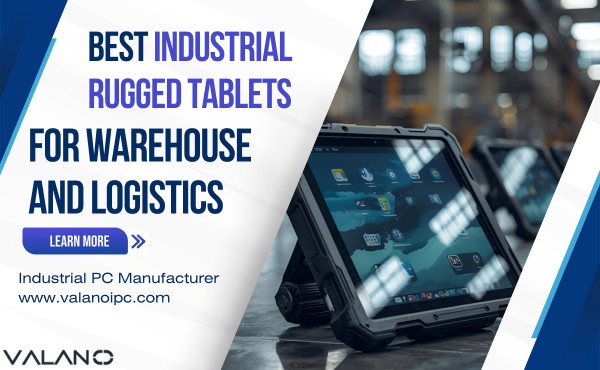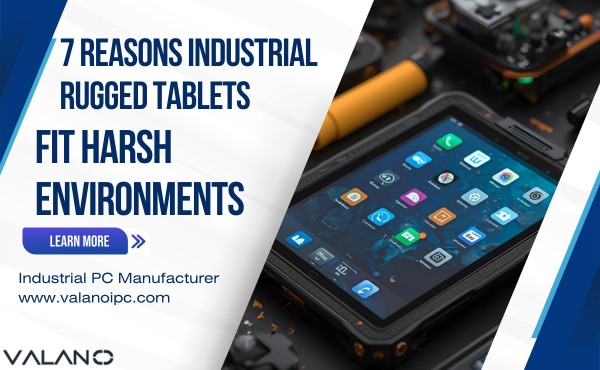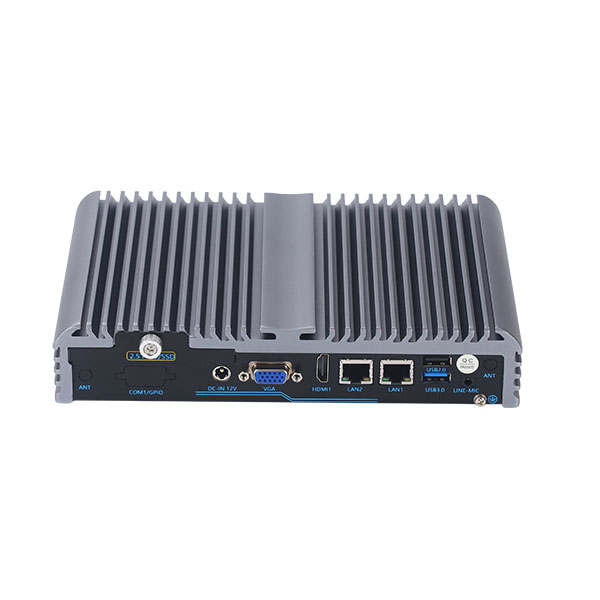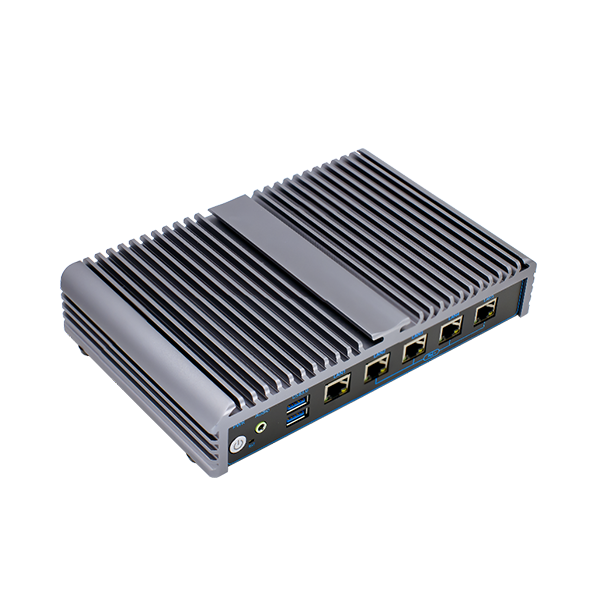
Industrial PCs play a crucial role in machine vision systems by enabling fast data processing, real-time system control, and reliable performance in harsh environments. They are designed to withstand challenging conditions such as temperature extremes, dust, and vibrations. These PCs integrate seamlessly with cameras, sensors, and other automation tools, providing accurate and efficient results across various manufacturing processes.
Key Takeaways
Built for Tough Environments: Industrial PCs are designed to endure harsh conditions, making them ideal for applications in factories, transportation, energy, and more.
High-Speed Data Processing: Featuring fast processors such as Intel i3/i5, these systems excel at handling large volumes of visual data in real-time, essential for tasks like product inspection and robot control.
Flexibility for Future Growth: Modular designs allow for easy upgrades, ensuring that these PCs can adapt to emerging technologies, including AI and deep learning, and meet evolving industrial needs.
Industrial PCs for Machine Vision: Key Features
Fanless and Robust Designs for Harsh Environments
Industrial PCs often feature fanless designs that help prevent dust accumulation and overheating. These fanless systems operate efficiently in extreme temperatures, ranging from -20°C to 60°C, and their lack of moving parts minimizes the risk of mechanical failure. Their rugged construction protects against dust, water, and vibrations, making them perfect for demanding sectors such as agriculture, energy, and public transport.
Real-Time Data Processing with Fast Processors
Industrial PCs equipped with powerful processors like Intel® i3/i5/i7 ensure fast data handling and accurate real-time processing. This is critical for machine vision systems involved in quality inspection, robotic control, and AI-driven tasks such as defect detection and predictive maintenance.
Flexible Designs for Future Needs
These PCs are made to be flexible and easy to upgrade. For instance, modular designs let you add ports or other features when needed. This means your system can grow with new tools or better automation tech.
Built-in Connections for Easy Communication
Built-in connections help these PCs talk to other devices easily. They work with cameras, sensors, and automation tools using different communication systems. Fast data transfer, like Gigabit Ethernet and USB3 Vision, ensures quick processing. Their small size also fits well in tight spaces, making them useful in many industries.
How Industrial PCs Enhance Machine Vision Systems
Accelerating and Improving Visual Inspections
Industrial PCs significantly speed up visual inspections, enabling the examination of hundreds or even thousands of parts per minute with high accuracy. These systems deliver consistent and reliable results, ensuring high-quality standards are met without the limitations of human fatigue.
Faster Defect Detection: Automated systems powered by industrial PCs detect faults and defects faster than manual inspection, improving overall efficiency and reducing waste.
Reducing Human Error: By automating inspections, industrial PCs minimize the risk of human error and reduce eye strain for operators.
Scalable and Future-Ready: As technology advances, industrial PCs can be easily upgraded, allowing them to support new machine vision algorithms or additional sensors for future-proofing systems.
Data-Driven Improvements
Data from machine vision systems powered by industrial PCs shows significant improvements in defect detection, with deep learning models outperforming traditional methods by up to 8.6 times in detecting faults.
Helping Robots Work Smarter
Industrial PCs help robots do advanced tasks better. Their fast processors let robots make quick decisions. This is important for sorting, assembling, and packaging items. They connect easily with cameras and sensors for precise control. This boosts productivity and lowers costs for manufacturers.
Powering AI and Deep Learning
AI and deep learning need industrial PCs to work well. These PCs use GPUs to handle complex tasks quickly. They help systems spot patterns and details fast. For example, deep learning finds defects and checks assembly accuracy. Real-time processing also helps with tasks like predicting machine problems and self-driving cars.
Built to Last in Tough Conditions
Industrial PCs are made to work in harsh environments. They go through tough tests to ensure they last. For example:
Test Type | What It Checks |
|---|---|
Temperature-Humidity Cycling | Tests damage from changing moisture levels. |
High Altitude Simulation | Checks performance in low-pressure conditions. |
Liquid-to-Liquid Thermal Shock | Tests how they handle sudden temperature changes. |
These features make them essential for industries like energy, transport, and manufacturing, where reliability matters most.
Applications of Industrial PCs in Machine Vision

Checking Product Quality in Factories
Industrial PCs help factories check product quality. They use cameras to find defects, measure sizes, and check assembly. These systems can inspect hundreds of items every minute. They work well even in dusty, shaky, or very hot places. You can change their features to fit different factory needs. This makes them useful for many industries.
Making Warehouses Work Better
In warehouses, industrial PCs help with daily tasks. They track inventory, scan barcodes, and sort items quickly. Their fast processors handle lots of data at once. They connect sensors, cameras, and robots for smooth operations. This reduces mistakes and speeds up tasks like packing orders. Their small size fits easily in crowded spaces, perfect for busy warehouses.
Helping Robots and Self-Driving Machines
Industrial PCs make robots and self-driving machines smarter. They process data from cameras and sensors to guide movements. For example, they help tractors plant crops or robots weld parts in factories. You can upgrade these PCs as technology improves. This keeps them useful for a long time.
Inspecting Without Touching
Industrial PCs check surfaces without touching them. They use advanced tools like 3D imaging to find problems. For example:
They check rough surfaces for tiny details.
They find defects in phone screens.
They measure tiny parts on circuit boards.
They check medical seals for problems.
These systems work faster than old methods and give clearer results. Their portable design makes them useful in many fields, like electronics and healthcare.
Feature/Aspect | Description |
|---|---|
Strong Build | Industrial PCs resist dust, water, and shocks for tough jobs. |
Flexible Use | They meet special needs with certifications for different industries. |
Easy to Customize | Modular designs let you add features for specific tasks. |
Long-Lasting | They are built to last 10 to 15 years for reliability. |
Machine Vision Focus | New models are made for machine vision, improving performance and setup. |
Industrial PCs are key to modern machine vision systems. They provide strong performance and dependability. Features like Vaolano IC06-i3-5L,They connect easily with cameras and sensors for smooth operation. With 9 USB ports and 6 COM ports, they can grow with changing industrial needs.
Built tough and packed with advanced features, industrial PCs help improve efficiency, accuracy, and creativity in automation and manufacturing.
Feature | Description |
|---|---|
Chipset | Intel® Skylake-U Core™ i3-6100U |
Processor Support | Intel Celeron®, Pentium®, i3, i5, i7 processors |
Graphics Card Support | Intel® HD Graphics 520 (Via CPU) |
Scalability | Adapts to new tools with flexible communication options |
Expansion Slots | Includes 1 MINI_PCIE & 1 M.2 Key-E |
USB Ports | Has 9 USB ports for more device connections |
Lan Ports | 5 x Intel Ethernet Ports, LAN1 supports remote management, LAN2 to LAN5 support PoE |
As industries use more machine vision tools, industrial PCs will stay important. They help businesses stay competitive and innovative.
FAQ
Why are industrial PCs better than regular PCs for machine vision?
Industrial PCs work well in tough conditions. They connect easily with cameras and sensors. Their modular design makes them reliable for hard jobs.
Do industrial PCs work with AI and deep learning?
Yes, industrial PCs use GPUs for complex AI tasks. They help find patterns, spot defects, and predict problems in real-time.
How long can industrial PCs last?
Industrial PCs can last 10 to 15 years. They are built to handle dust, water, and shocks, making them great for rough environments.









